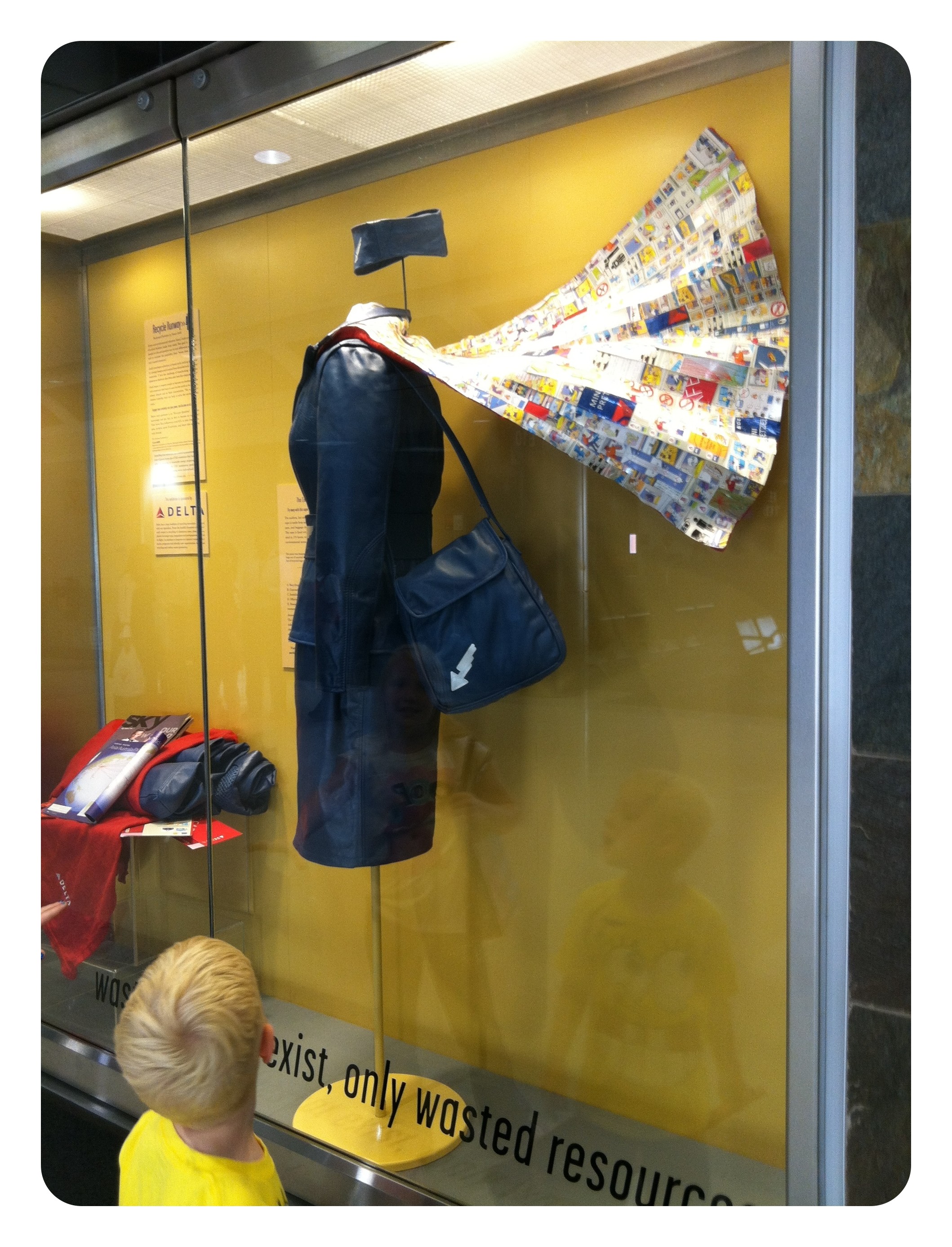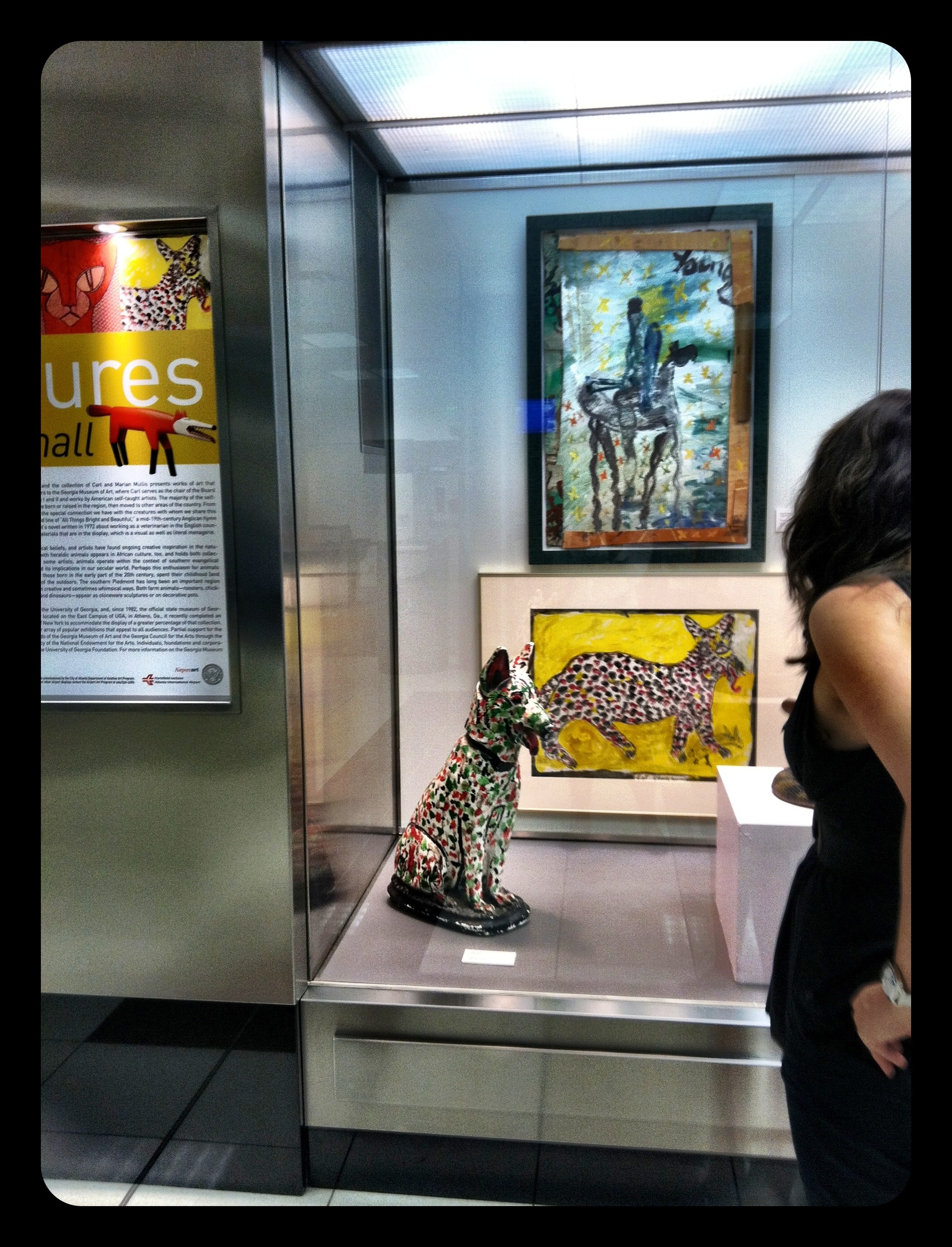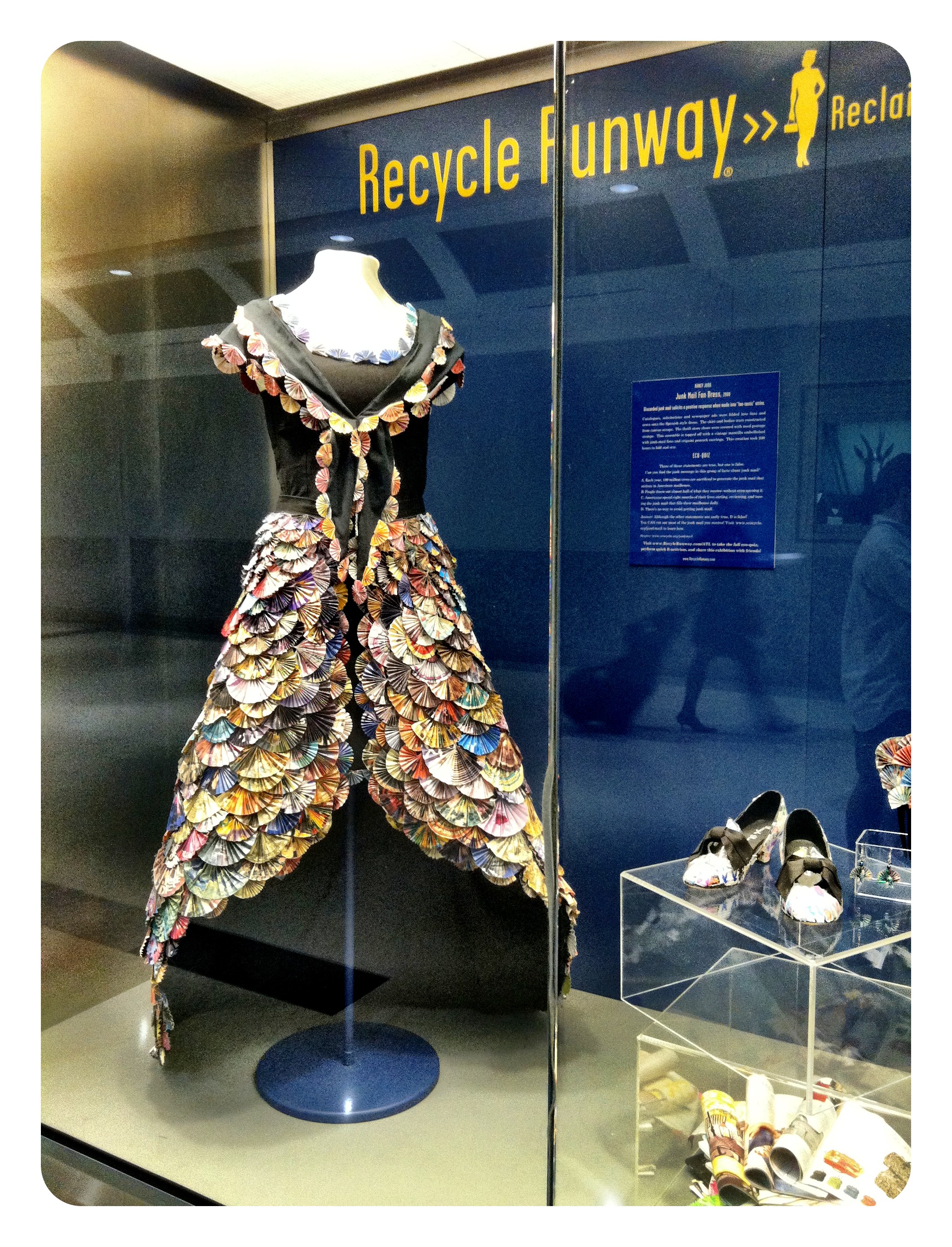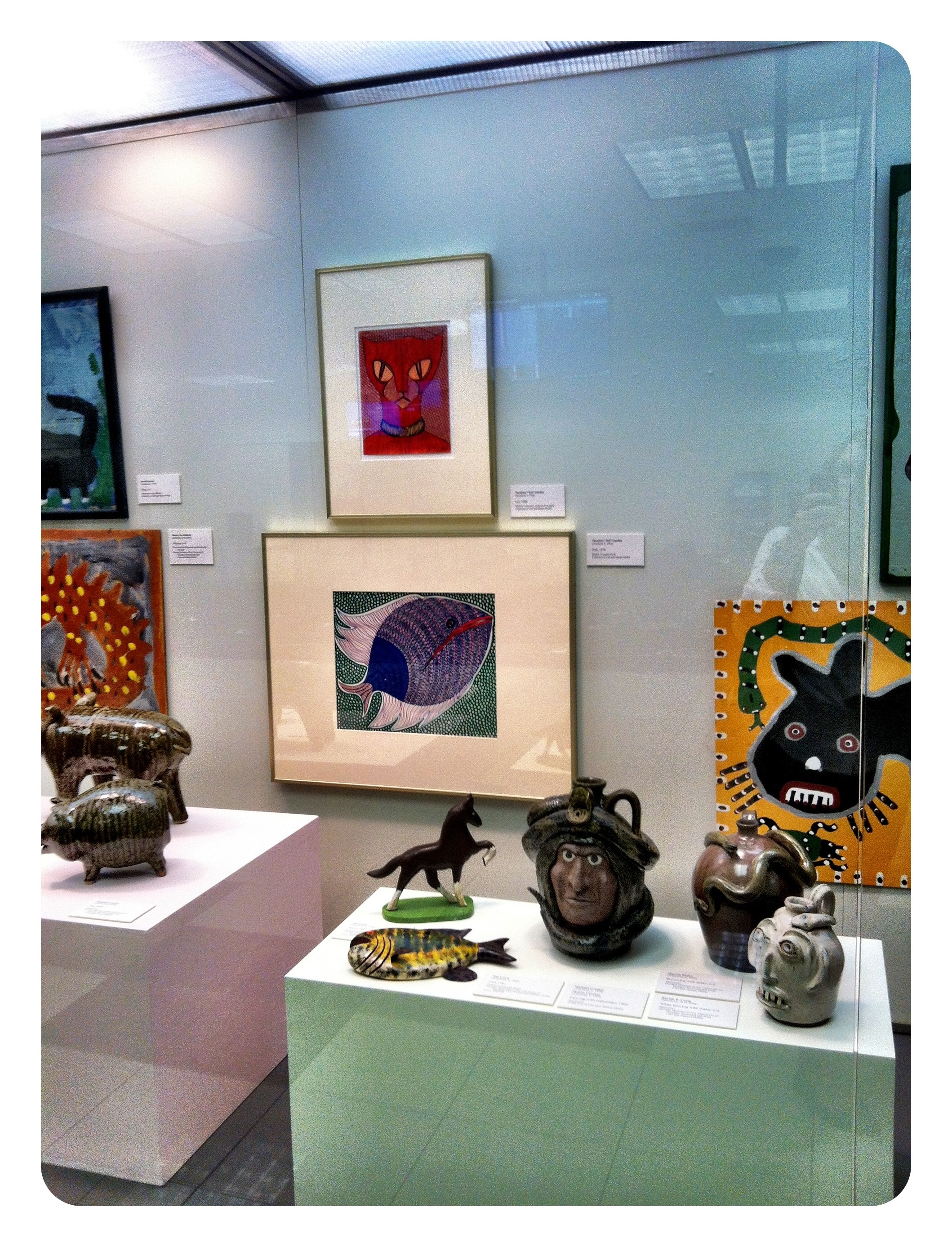Telling stories without paper: human voices and created objects
 Without realizing it earlier, this semester I am in two courses that I have been extremely excited to take, and that both deal with forms of historical evidence that are neither paper nor text. The Document is the historian's love, her bread and butter, that which is often the basis of entire projects, which turn into the articles, tomes, textbooks, and popular history books that everyone else reads.
In public history classes, though, it is a simple truth that the regular person goes to museums not to read lots of label text and long passages that, though their stories may be astonishing, do involve more words. No, they most often go to see the things that make history come to life for them. Artifacts, small and large, can often be so powerful, say so much with no words. And this is where my classes are taking me. The emphasis in Material Culture is obvious: the objects, created or altered somehow by man, that offer insight into customs, social patterns, lifestyles, foodways, and larger culture of the people of our past.
Without realizing it earlier, this semester I am in two courses that I have been extremely excited to take, and that both deal with forms of historical evidence that are neither paper nor text. The Document is the historian's love, her bread and butter, that which is often the basis of entire projects, which turn into the articles, tomes, textbooks, and popular history books that everyone else reads.
In public history classes, though, it is a simple truth that the regular person goes to museums not to read lots of label text and long passages that, though their stories may be astonishing, do involve more words. No, they most often go to see the things that make history come to life for them. Artifacts, small and large, can often be so powerful, say so much with no words. And this is where my classes are taking me. The emphasis in Material Culture is obvious: the objects, created or altered somehow by man, that offer insight into customs, social patterns, lifestyles, foodways, and larger culture of the people of our past.
So too do I find this in Oral History, the other aforementioned class, where our discussions, readings, and projects revolve around the spoken word, in a historical context, and using a proper methodology that puts it far beyond casual conversation. In conducting oral histories, we are formally and methodically documenting the past, in ways that effect immensely both the narrator (the subject) and the interviewer (me).

I find both of these mediums so powerful. I conducted two oral histories earlier this year, after a one-class-period crash course in one of my other classes, and while they were on two very different topics, I discovered the many nuances that oral historians have been raving about since the 1960s; one of the most significant to me was the unexpected paths the interview can take, and also the candidness of my narrators. By asking very simple questions and then shutting my damn mouth, it was astonishing what stories they would tell me, without my ever having to ask them something provocative or controversial. Not that the primary goal is provocative information, not at all. But, for example, I was interviewing a couple in the late forties who have a young daughter they adopted from Guatemala, and there were a lot of delicate and sensitive subjects I wanted to broach with them, like whether or not they would someday tell her about her half-siblings that they knew she had back in Guatemala, or whether they would help her in finding her biological roots, if she ever wanted to know more about them. These were things I didn't think I would have the guts to ask. But I never needed to: the family was so welcoming and so willing to explore their complicated emotions on those subjects, via other more basic questions I had asked within the larger subject of their family and their relationship to Guatemala right now. I know this won't always be the case, and this is a topic I am continuing to work with, but it was an extraordinary first dive into the process, and into the revelations of what oral histories are, and what they do for larger historical projects you are producing.
 And material culture, whose roots can be found across disciplines--archeology, folklore, sociology, history--has been enchanting academics in these fields for far longer than I have been alive to ponder its worth. I am not a natural at gleaning information and historical clues from innate objects the way I have been able to do with documents, even though, at their core, neither one is more or less equipped than the other to tell a story about the person who created it. Documents are not purveyors of truth any more than a three-dimensional object that lacks a description or context of any kind. Just because something has words on it, a handwritten letter, say, does not mean we can understand it any better upon finding it than we would a shard of porcelain. My goal this semester is to begin to better navigate and interpret our material past, in more nuanced ways than I have ever known or cared to explore.
And material culture, whose roots can be found across disciplines--archeology, folklore, sociology, history--has been enchanting academics in these fields for far longer than I have been alive to ponder its worth. I am not a natural at gleaning information and historical clues from innate objects the way I have been able to do with documents, even though, at their core, neither one is more or less equipped than the other to tell a story about the person who created it. Documents are not purveyors of truth any more than a three-dimensional object that lacks a description or context of any kind. Just because something has words on it, a handwritten letter, say, does not mean we can understand it any better upon finding it than we would a shard of porcelain. My goal this semester is to begin to better navigate and interpret our material past, in more nuanced ways than I have ever known or cared to explore.
Museum staffs, and so, museum exhibits, have as their goal the interpretation of the past, in a way that makes people look at their own lives and relate the past to them, to where they live, to those around them. This can be done very well with historical documents, presented in a cohesive manner, that tell a wonderful story. But, as soon as you add the human voice, and the objects created by men and women in that same story, you have brought the exhibit to life. You have succeeded in a more successful, effective way, in relating the story to your audience, and they will leave remembering it more clearly, and hopefully in a way that connects them to the past, to its utter humanity and enormity.
Henry Glassie, in his book Material Culture, describes our relationship to things in our everyday life, and inspires us to think about them in more significant ways, as pieces that connect us to the larger humanity of the world. After all, if it as not us personally, someone created every single thing in our lives. That is a powerful thought. I leave you with the passion of his words, so inspiring and clearly telling, as he has spent his life studying the Things of People.
Among the new things, the most important, I believe, is the collection: the assembly of gifts, souvenirs, and commodities into a home--the domestic environment in contradistinction to the house. The collection represents a victory over disorder in industrial times, when the flood of goods threatens to sweep us to madness in a rising tide of irrelevant trash, just as the house of stone represented a victory over disorder in the days when people lived close to nature, when the lean wolves came down from the heath and the night winds wailed. But we should not be confused. Today, while we create things out of things made by other people, all across the globe, people in no way less real or alive are going up into the woods and down to the riverside. They are chopping out chunks of nature and fashioning artifacts that display their spirit and serve the serious needs of their neighbors.

